Affiliate links on Android Authority may earn us a commission. Learn more.
OnePlus 6 vs Samsung Galaxy S9 Plus - Can you get the same quality for a smaller price
Published onJuly 4, 2018
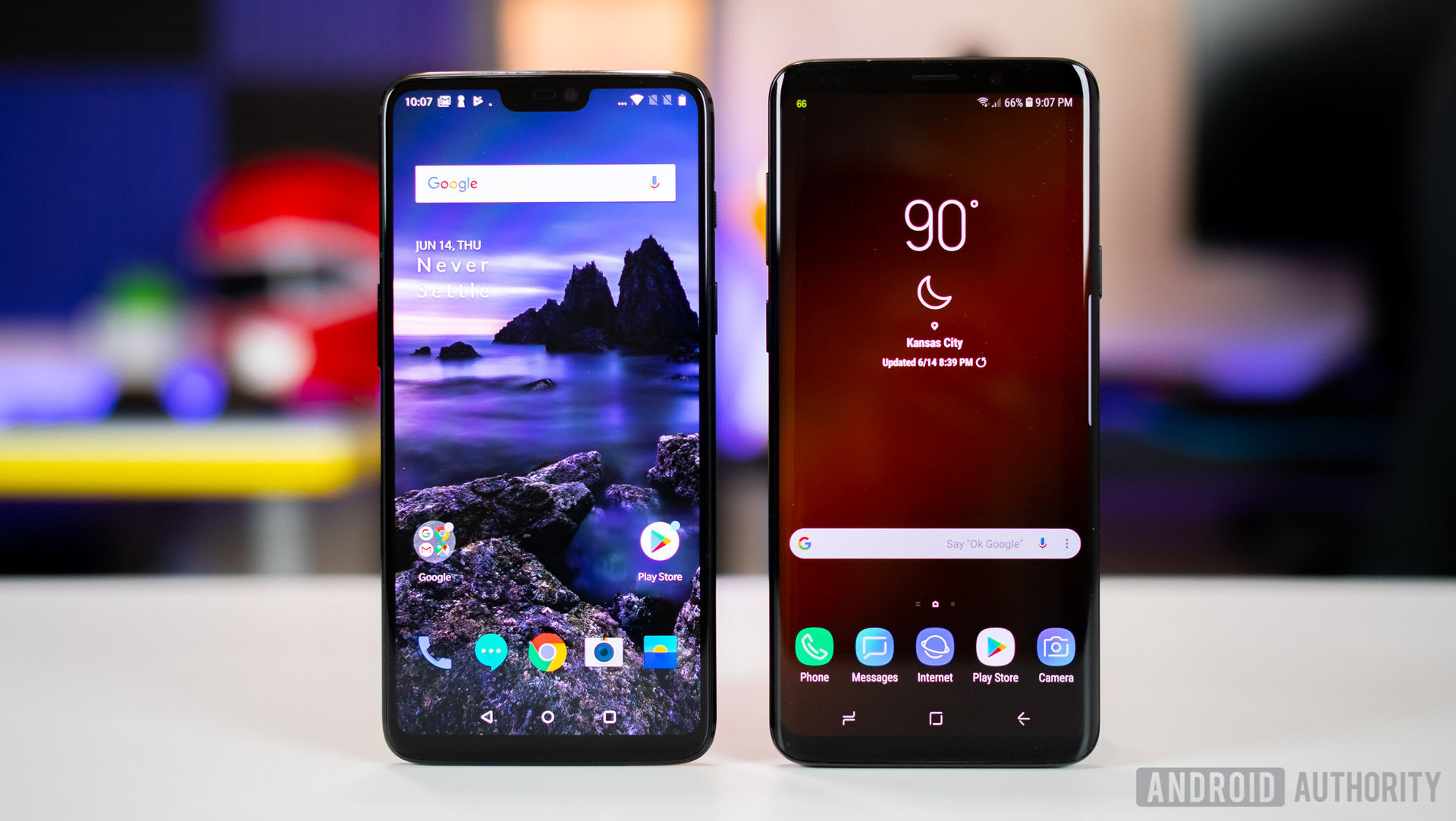
The OnePlus 6 is arguably the best flagship you can buy without spending a flagship price. Despite some missing features it’s still an incredible value. The Samsung Galaxy S9 Plus, on the other hand, brings all the bells and whistles you could want, and a price that reflects it.
Let’s find out which one’s a better buy in this OnePlus 6 vs Samsung Galaxy S9 comparison.
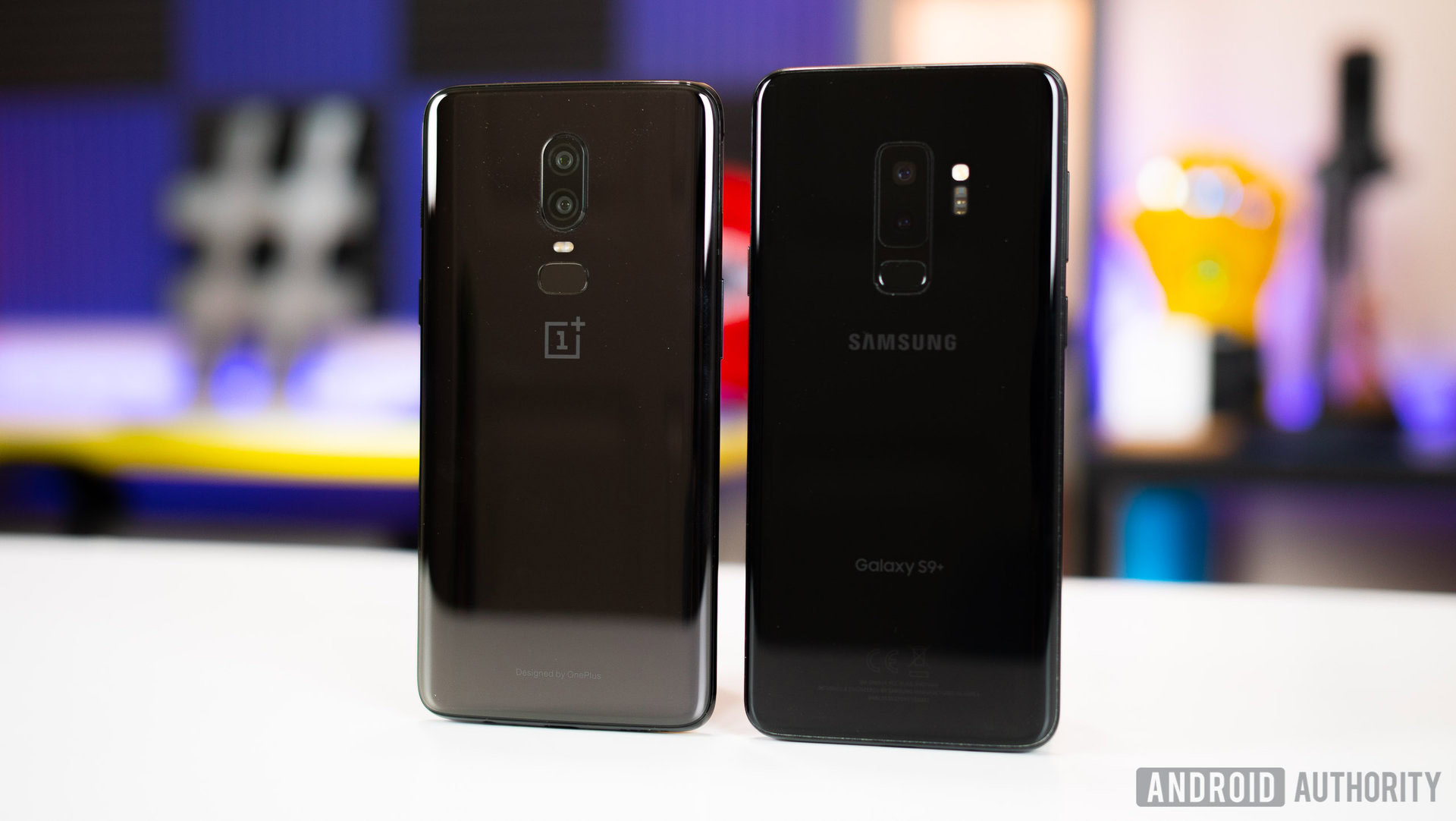
Design
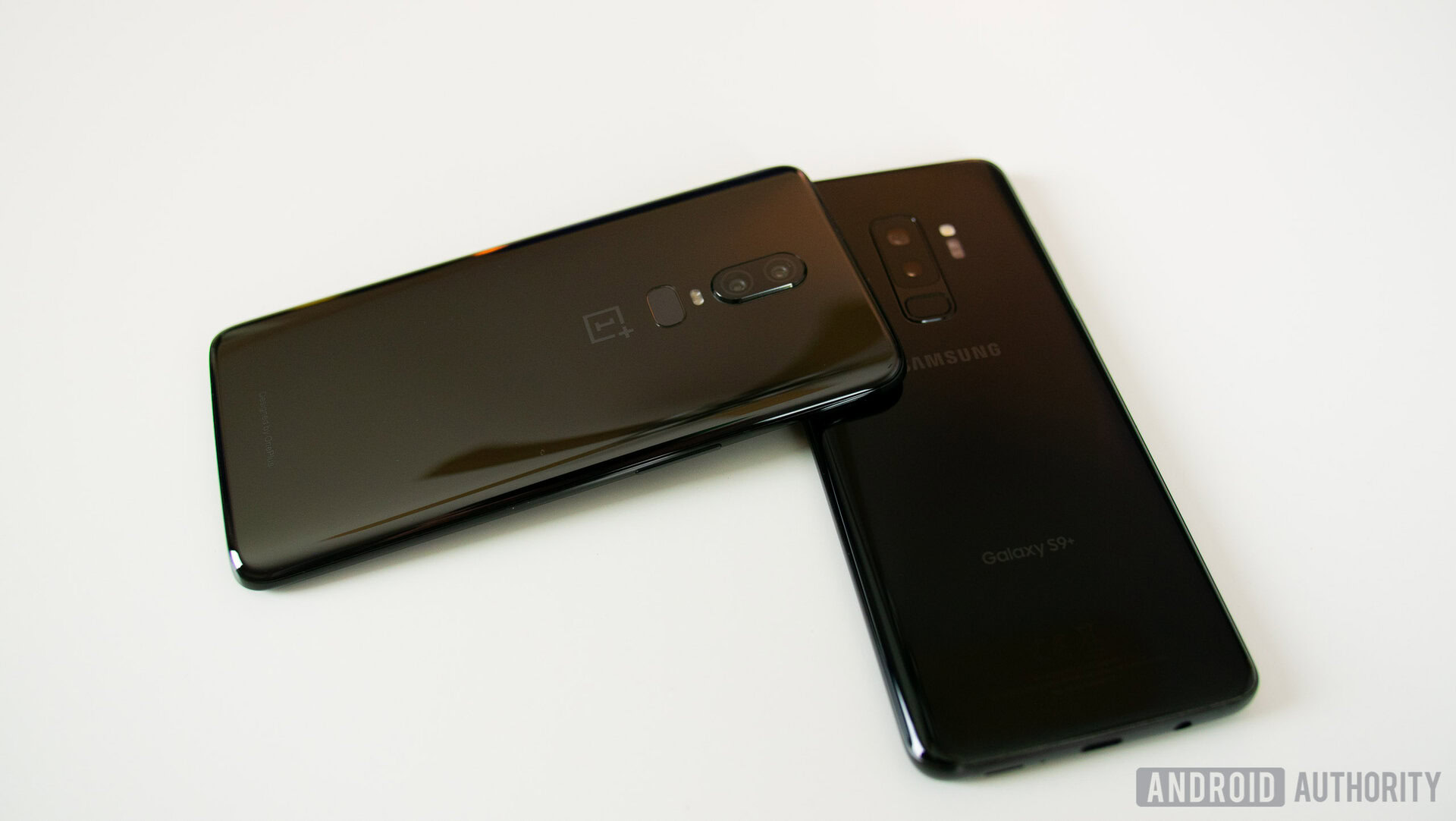
With OnePlus making the switch to a glass slab design this year, the OnePlus 6 and Galaxy S9 Plus’ designs couldn’t be more similar. Samsung has had this design for several years, but in 2018 many smartphone OEMs jumped on the trend. The glass sandwich and metal frame combo isn’t unique, but it’s a safe choice that provides for exceptional build quality on the OnePlus 6 and Galaxy S9 Plus.
Both devices feature rounded corners and lots of curves, giving them a sleek appearance and better ergonomics. There are some minor differences such as the rounded back of the OnePlus 6 whereas the S9 Plus’ backside is mostly flat. Otherwise, they don’t feel too different and share a similar footprint. They’re roughly the same height and the only noticeable difference when holding them is that the OnePlus 6 is a few millimeters wider.
The mostly glass designs of the OnePlus 6 and S9 Plus mean they’re very hard to keep clean from fingerprints, but the glass back is practical with the S9 Plus. Samsung’s implemented wireless charging, which isn’t possible with an all-metal design. OnePlus on the other hand simply changed its design formula to follow the trend and didn’t take the opportunity.
Display

AMOLED is the name of the game when it comes to the OnePlus 6 and Galaxy S9 Plus’ displays. The phones’ displays are plenty spacious at 6.2 inches, with vibrant colors, excellent contrast, and deep dark blacks. The main difference between these two displays is the resolution. The S9 features a quad HD screen, while OnePlus 6 sticks with a 1080p panel. Regardless of how many manufacturers have adopted QHD I’ve never found the 1080p resolution on OnePlus devices problematic. It’s plenty sharp and unless you’re examining the display with a microscope, it’s hard to notice a difference.
Consumers may have a problem with the notch on the OnePlus 6’s display. I am not a fan of notches, but the one on the OnePlus 6 doesn’t bother me as much as I expected. If you can’t stand the sight of notches, the Galaxy S9 Plus is the better option — one of the few flagships without one.
Performance
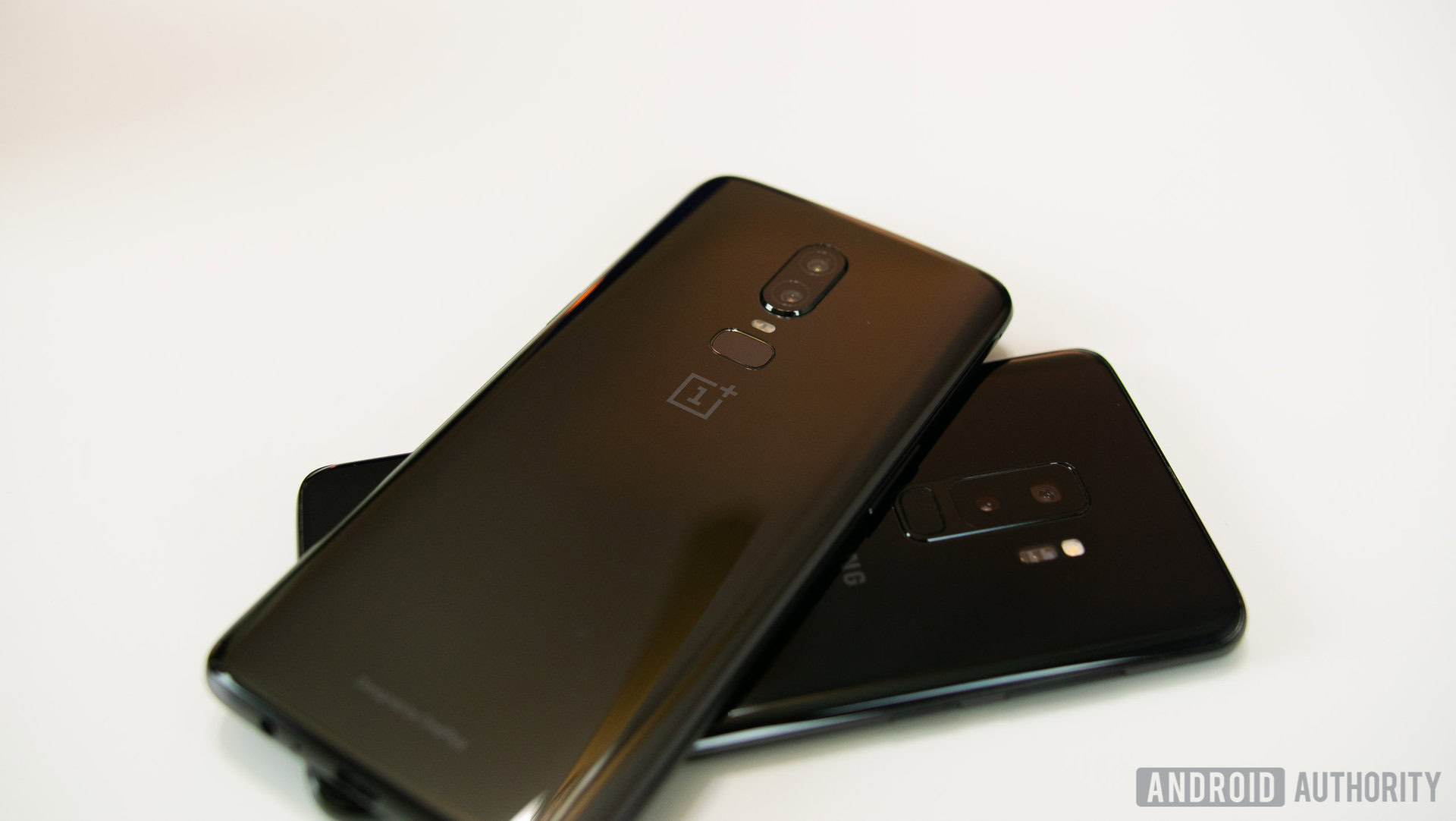
Whether you're just casually browsing the web, checking social media, multitasking, or playing high-end games, the OnePlus 6 and S9 Plus handle any task you throw at them with ease.
The OnePlus 6 and Galaxy S9 Plus both feature the Snapdragon 845, with 6 or 8 gigabytes of RAM on the OnePlus 6 and 6 gigabytes of RAM on the S9 Plus. The high RAM combined with Qualcomm’s most powerful processor results in blazing fast performance on both devices. Whether you’re just casually browsing the web, checking social media, multitasking, or playing high-end games, the OnePlus 6 and S9 Plus handle any task you throw at them with ease.
Both devices can reach upwards of 6 hours of screen-on time, which is plenty for casual use and definitely enough for heavy usage.
The Snapdragon 845 processor is also very power efficient and helps to provide excellent battery life when paired with the large 3,300 mAh battery of the OnePlus 6 and 3,500 mAh battery of the S9 Plus. Both devices can reach upwards of 6 hours of screen-on time, which is plenty for casual use and definitely enough for heavy usage.
Read Next:
- Samsung Galaxy S9 and Galaxy S9 Plus problems and how to fix them
- OnePlus 6 problems and how to fix them
The OnePlus 6 may lack wireless charging, but the company’s Dash charging technology more than makes up for it. It’s one of the fastest charging methods available on the market and fills up the OnePlus 6 in no time.
Hardware
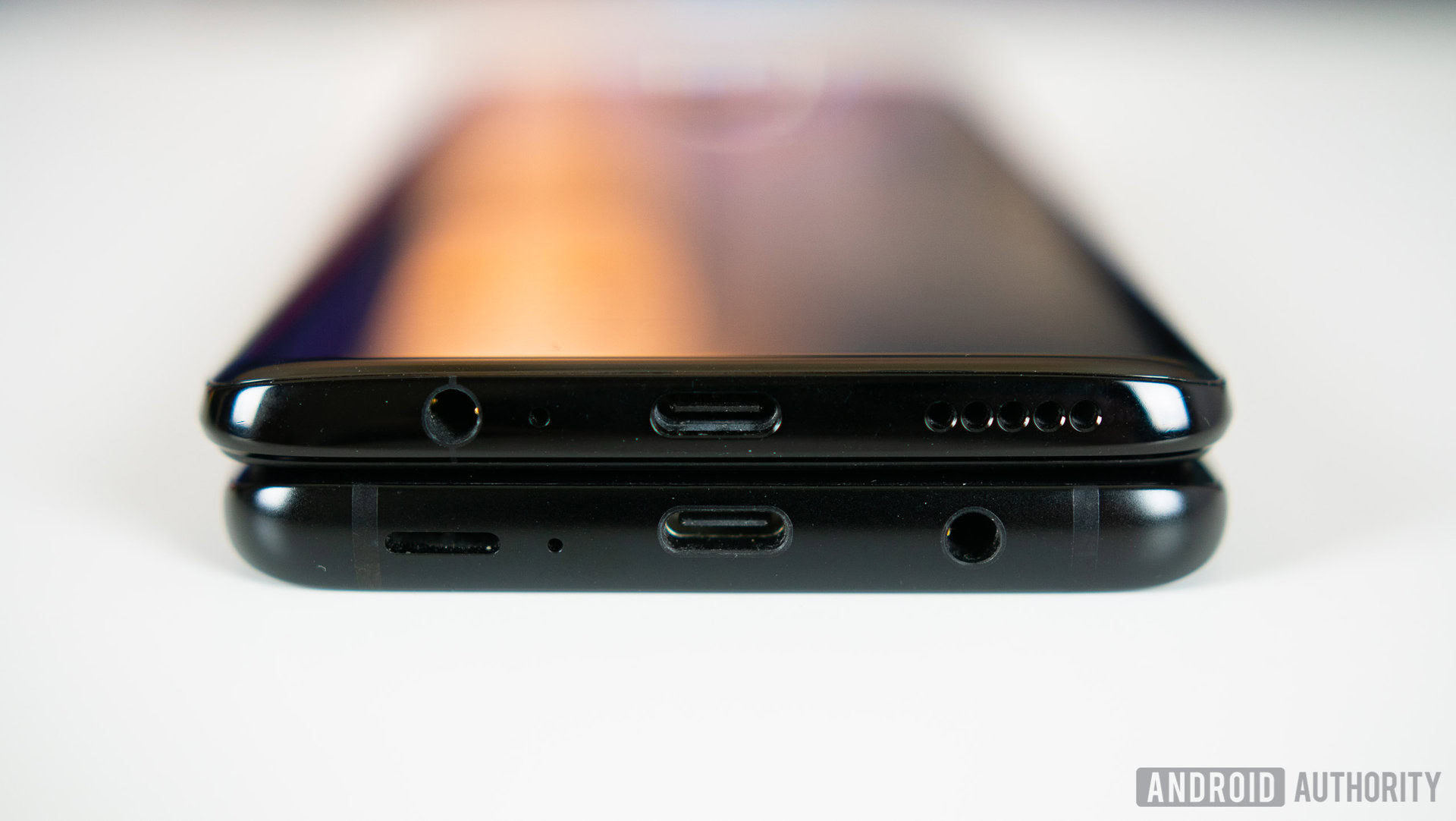
Both devices feature 3.5 mm headphone jacks, rear-facing fingerprint readers and face unlock for security. In addition to the fingerprint sensor and face unlock, the S9 Plus offers iris scanning technology to make the face unlock more secure. The Galaxy S9 Plus comes with a few other extra bells and whistles, like expandable storage and official IP 68 certification against water and dust. The OnePlus 6 comes in large enough storage options that not having expandable storage isn’t a deal breaker, but the lack of IP certification could be.
So many flagship smartphones nowadays include IP certification that it’s almost becoming a standard feature. It’s another missed opportunity that could have taken the OnePlus 6 to the next level. OnePlus says the OnePlus 6 can survive some torture against water, but that doesn’t give the same peace of mind as being officially water resistant.
Camera
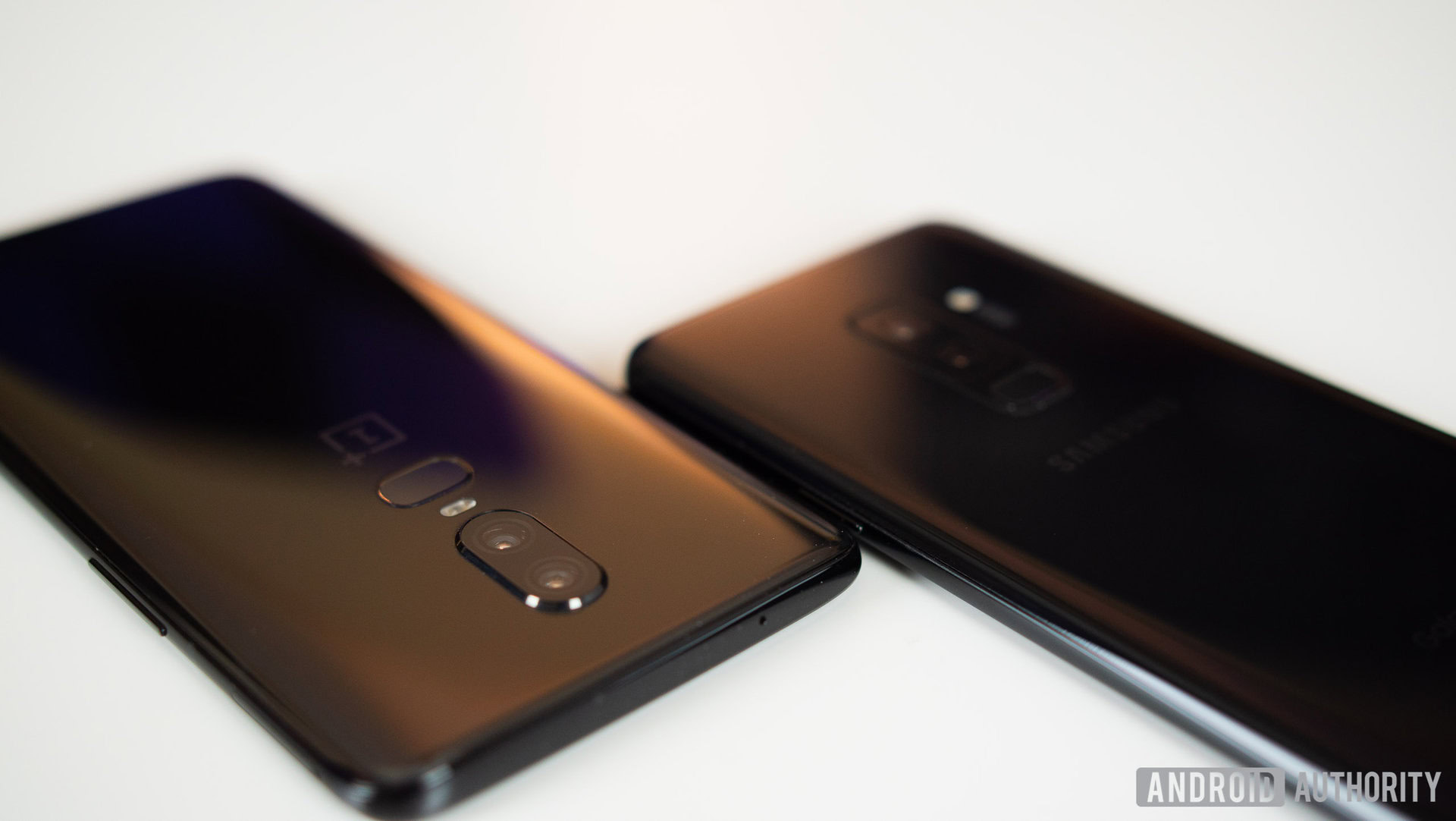
As with most smartphones in 2018, the OnePlus 6 and Samsung Galaxy S9 Plus both have dual rear-facing cameras. The OnePlus 6 has a 16 and 20-megapixel combo with OIS and 19 percent larger pixels than last year’s model for improved low light. The Galaxy S9 Plus has two 12 megapixel sensors with dual pixel autofocus and OIS. The secondary sensor is a telephoto lens for 2X optical zoom and portrait mode effects. The OnePlus 6 also has a portrait mode and a 2X zoom feature, but the zoom is digital. What makes the Galaxy S9 Plus’ camera unique from other dual cameras is its dual aperture, which allows for a true aperture change from f/1.5 and f/2.4 for better low light performance and extra bokeh.
The cameras from the OnePlus 6 and S9 Plus produce images with vibrant colors, great contrast, and sharp details.
Picture quality from both cameras are very good. You’d probably be surprised at how well OnePlus keeps up with Samsung. The cameras from the OnePlus 6 and S9 Plus produce images with vibrant colors, great contrast, and sharp details. In most situations, the images from both cameras look very similar, with only some minor differences. The OnePlus 6’s camera produces oversaturated and unnatural reds compared to the S9 Plus. The S9 Plus also has slightly better dynamic range, but the difference is only marginal — both have great dynamic range overall.
In low light, the S9 Plus produces cleaner images with far less noise but the OnePlus 6 isn’t very far behind. In some situations, I prefer the results from the OnePlus 6 as it produces images with better white balance and more natural color tones.
Software
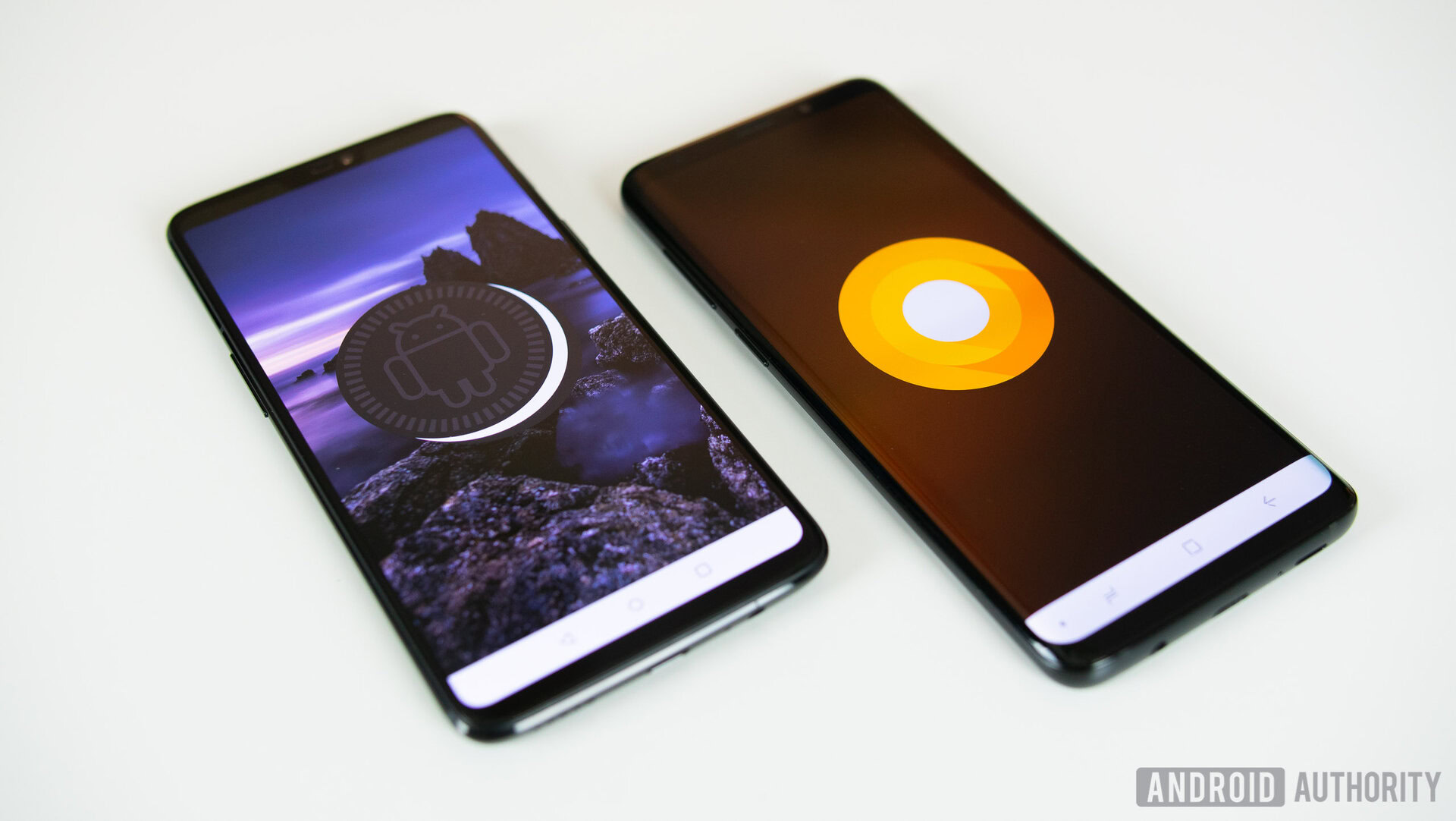
On the software front, the experience between the OnePlus 6 and Galaxy S9 Plus couldn’t be more different. They’re both running Android Oreo, but the OnePlus 6 uses OnePlus’ own OxygenOS and the S9 Plus runs the Samsung experience. OnePlus keeps its software very simple by maintaining a stock look and feel, but provides a ton of customization options. The appearance of the UI can be tweaked and there are multiple gesture features for navigating the software or quickly launching applications.
The Samsung experience changes much of the overall look of Android, but it’s still aesthetically pleasing and easy to use. Samsung provides useful additions like its edge UX software, Samsung Pay, and a secure folder for keeping information private. Not every feature is useful and I prefer the stock-like experience of the OnePlus 6, but Samsung did an excellent job of tidying up its software with this iteration.
Gallery
Specifications
| OnePlus 6 | Samsung Galaxy S9 Plus | |
|---|---|---|
Display | OnePlus 6 6.28-inch AMOLED 2,280 x 1,080 resolution 19:9 aspect ratio | Samsung Galaxy S9 Plus 6.2-inch Curved Super AMOLED 2,960 x 1,440 resolution 18.5:9 aspect ratio |
SoC | OnePlus 6 Qualcomm Snapdragon 845 | Samsung Galaxy S9 Plus U.S.: Qualcomm Snapdragon 845 Global: Samsung Exynos 9810 |
GPU | OnePlus 6 Adreno 630 | Samsung Galaxy S9 Plus Adreno 630 (Snapdragon) Mali G72 MP-18 9 (Exynos) |
RAM | OnePlus 6 6/8GB | Samsung Galaxy S9 Plus 6GB |
Storage | OnePlus 6 64/128/256GB | Samsung Galaxy S9 Plus 64/128/256GB |
MicroSD | OnePlus 6 No | Samsung Galaxy S9 Plus Yes |
Conclusion
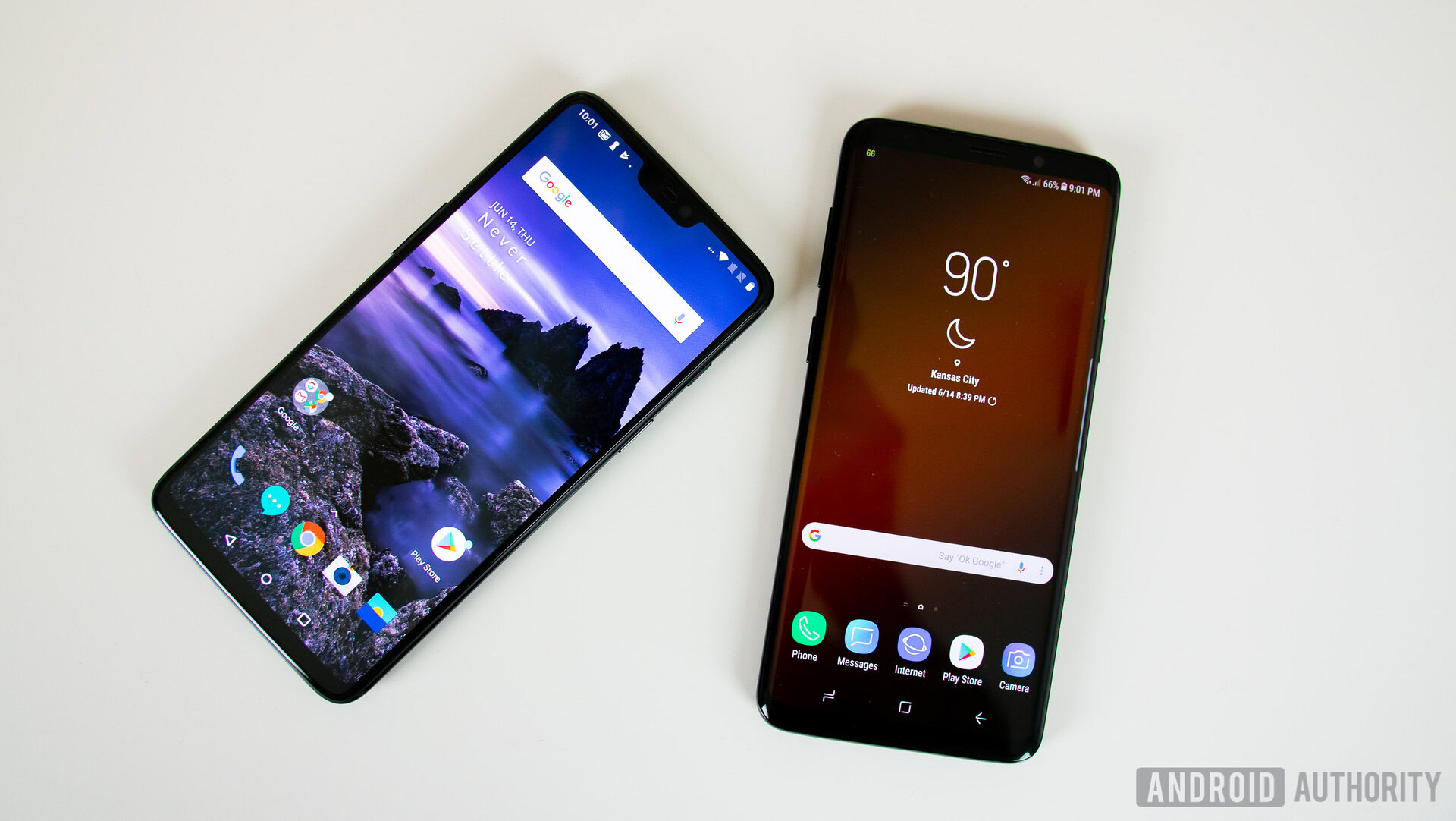
If price is a huge determining factor in your purchase, the OnePlus 6 is the obvious choice. It has the latest specs, a modern design, a beautiful screen, and dual cameras, but it lacks many of the features found on the Galaxy S9 Plus.
The S9 Plus is water resistant, with a microSD card slot and wireless charging. These features are becoming increasingly important to consumers looking to upgrade. Because of these features, the winner in this comparison is the Samsung Galaxy S9 Plus. It may cost a pretty penny, but for those extra features it’s worth it.
So that’s it for our OnePlus 6 vs Samsung Galaxy S9 comparison. What do you think of our conclusion? Sound off in the comments below.
Related
- OnePlus 6 review: the spiritual successor to the Nexus
- OnePlus 6 vs Apple iPhone X: can David take on Goliath?
- HONOR 10 vs OnePlus 6: Game, set, match
- Nokia 7 Plus vs HONOR 10: The top of the middle
- OnePlus 6 vs OnePlus 5T: The state of never settling
- HONOR 10 vs OnePlus 6 vs the competition
- OnePlus 6 vs HTCU12 Plus
- OPPO Find X vs the competition